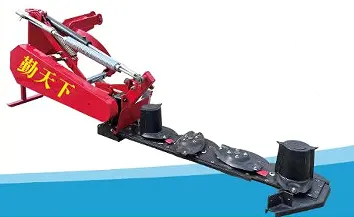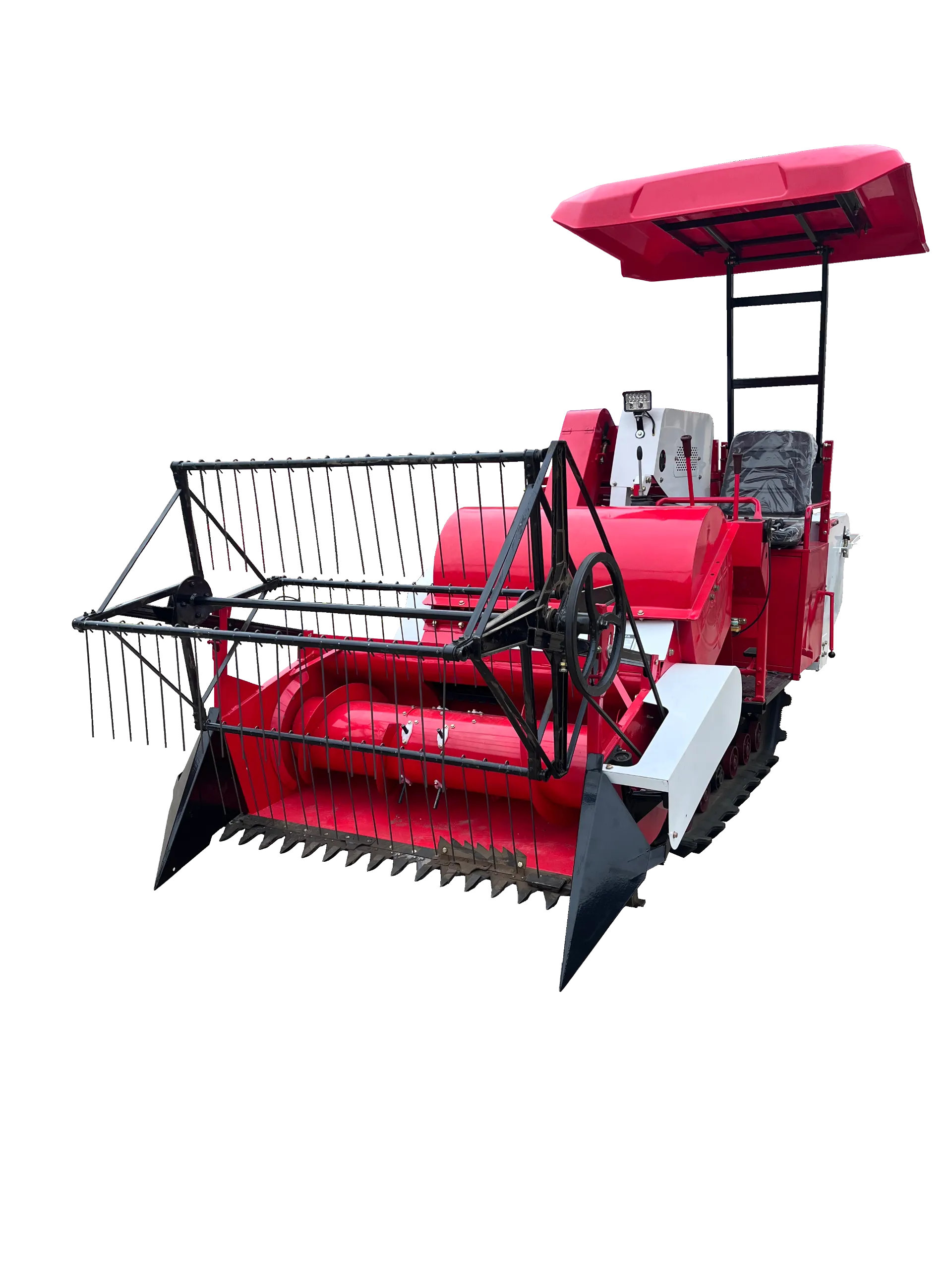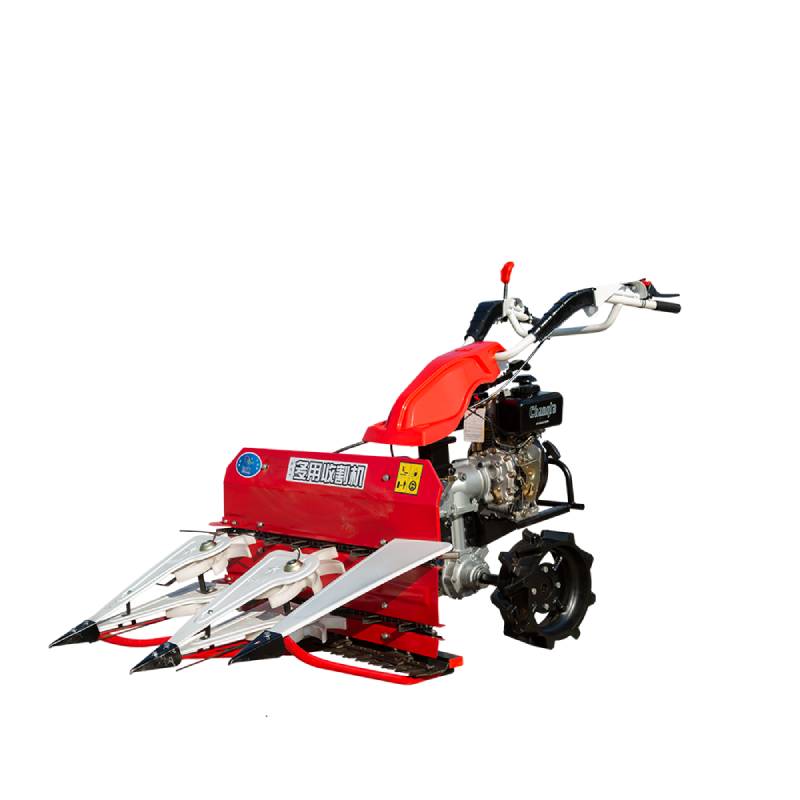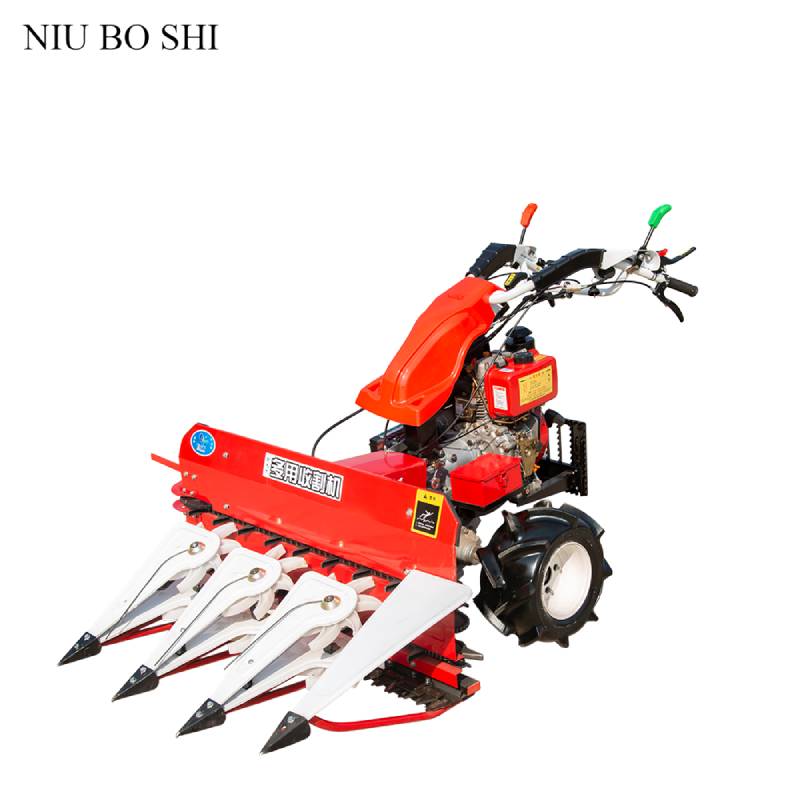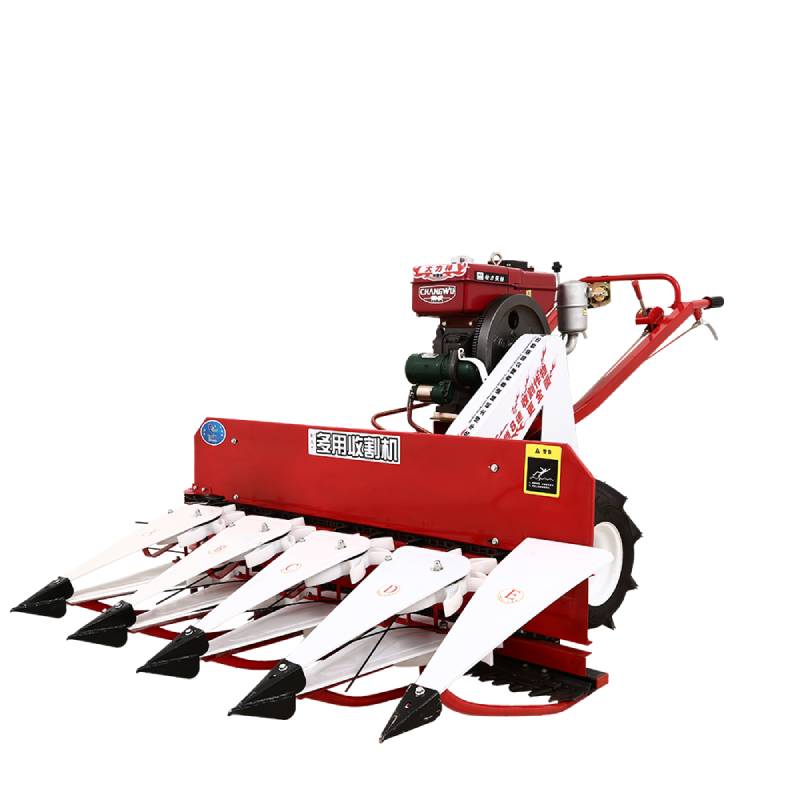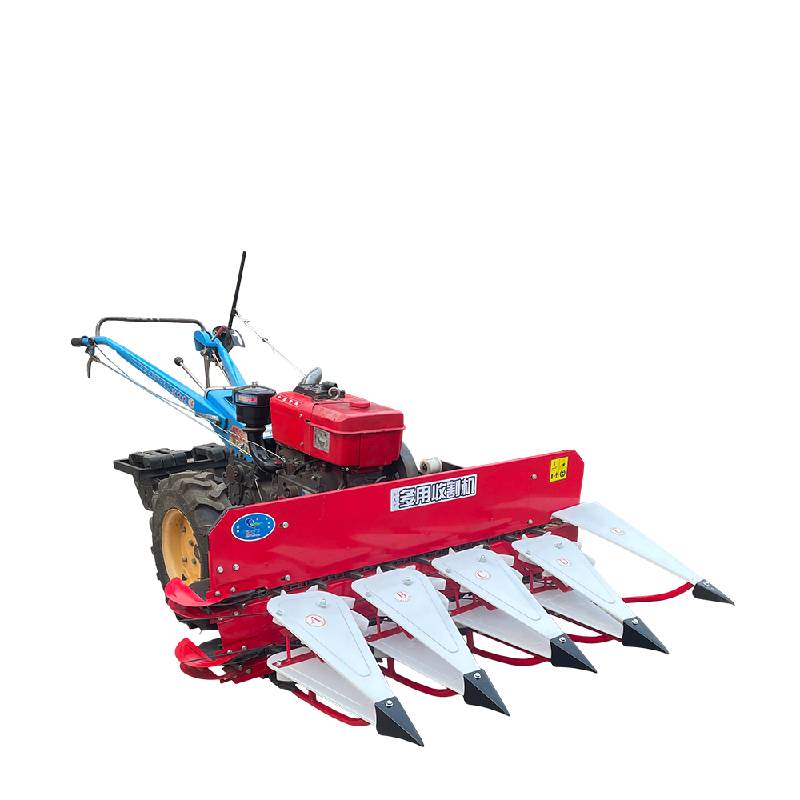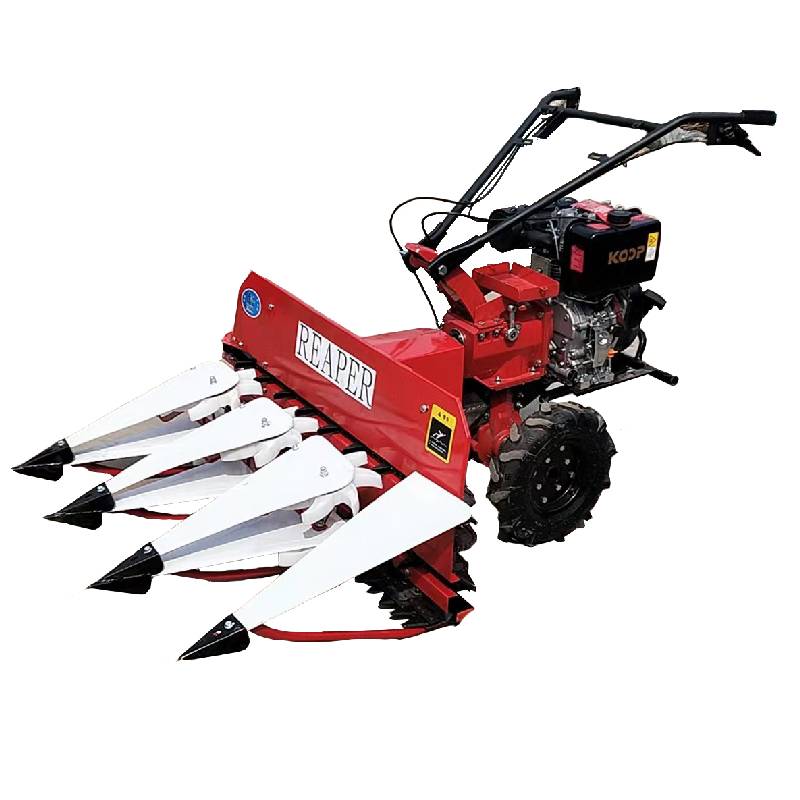Efficient Reaper Machine: Hand & Farm Models for Rice Harvest
The Evolution and Impact of Modern Harvesting Technology
In the agricultural sector, efficiency and mechanization are paramount for sustainable productivity. The reaper machine stands as a cornerstone of modern harvesting, transforming labor-intensive processes into streamlined, high-output operations. From small-scale farming to extensive agro-industrial ventures, the technological advancements in these machines significantly reduce harvest time, minimize crop loss, and optimize resource allocation.
This comprehensive guide delves into the intricate world of modern harvesting equipment, focusing on the sophisticated engineering, diverse applications, and profound economic impact of the reaper machine. We will explore its manufacturing precision, critical performance metrics, and the strategic advantages it offers to B2B stakeholders in the global agricultural supply chain.
Industry Trends in Agricultural Mechanization
The global agricultural machinery market is witnessing robust growth, driven by increasing population, rising demand for food, and diminishing arable land. Key trends shaping the demand for the farm reaper machine include:
- Precision Agriculture Integration: Modern reapers are increasingly equipped with GPS-guided systems, yield mapping, and sensor technology to optimize cutting height, speed, and grain recovery, minimizing waste and maximizing efficiency.
- Sustainable Practices: There's a growing emphasis on fuel-efficient engines and reduced emissions. Manufacturers are developing lighter, more agile machines that minimize soil compaction, contributing to long-term soil health.
- Automation and AI: While fully autonomous reapers are still emerging, current models incorporate advanced automation features, reducing operator fatigue and increasing operational consistency.
- Adaptability to Diverse Crops: Beyond traditional wheat and rice, reapers are being designed with interchangeable headers and adjustable settings to handle a wider array of crops, including corn, soybeans, and various forage crops. The demand for specialized equipment like the rice reaper machine, optimized for paddy conditions, remains strong in Asian markets.
- Emerging Market Growth: Developing economies are rapidly adopting mechanization to improve food security and agricultural output, fueling significant demand for both new and refurbished equipment.
Data from Statista indicates that the global agricultural machinery market is projected to grow from USD 131.7 billion in 2023 to USD 192.3 billion by 2030, reflecting a CAGR of 5.6%. This growth is largely attributed to the increasing adoption of advanced harvesting technologies.
Detailed Manufacturing Process of a Modern Reaper Machine
The production of a high-performance reaper machine like the Trailbreaker involves a multi-stage, precision-engineered process designed to ensure durability, efficiency, and safety.
Schematic Steps of Manufacturing:
- Material Sourcing & Preparation: High-grade structural steel alloys (e.g., Q345B, S355JR for chassis), wear-resistant steel for cutter bars (e.g., manganese steel), and engineering plastics for certain components are sourced from certified suppliers. Materials undergo stringent quality checks for chemical composition and mechanical properties before fabrication.
- Precision Cutting & Forming: Advanced CNC laser cutting and plasma cutting machines are used to precisely cut steel plates according to CAD designs. Hydraulic press brakes and rolling machines form complex structural components.
- Welding & Assembly of Chassis: Robotic welding ensures consistent, high-strength welds for the main chassis and frame. This minimizes human error and increases structural integrity, crucial for the longevity of a farm reaper machine. Manual welding is used for intricate, low-volume components by certified welders.
- Component Machining: Critical components such as gears, shafts, and bearing housings undergo precision CNC machining to achieve tight tolerances. Surface treatments like nitriding or carburizing enhance wear resistance and hardness.
- Surface Treatment & Painting: Components are thoroughly cleaned, pre-treated (e.g., phosphating), and then powder-coated or liquid-painted using high-adhesion, corrosion-resistant paints. This provides aesthetic appeal and superior protection against environmental factors, extending the reaper machine's service life.
- Engine & Drivetrain Integration: The chosen engine (e.g., a reputable diesel engine like Kubota or Yanmar for robust performance) is mounted and integrated with the transmission, typically a robust gearbox or hydrostatic drive system, ensuring efficient power delivery.
- Final Assembly & Electrical Systems: All major sub-assemblies – cutter bar, reel, platform, discharge auger, and operator controls – are meticulously assembled. Electrical wiring harnesses, sensors, and control panels are installed and tested for functionality.
-
Quality Control & Testing: Every reaper machine undergoes rigorous testing. This includes:
- Performance Testing: Engine dynamometer tests, hydraulic system pressure tests, and functional tests of all moving parts.
- Durability Testing: Accelerated fatigue tests simulate years of field operation.
- Safety Standards: Adherence to international standards such as ISO 12100 (Safety of machinery), ISO 4254 (Agricultural machinery – Safety), and CE marking for European markets.
- Calibration: Sensor and control system calibration to ensure precise operation.
- Packaging & Dispatch: Machines are cleaned, inspected one final time, and carefully packaged for shipping to minimize transit damage.
The target industries for such robust machinery include small-to-medium scale agricultural enterprises, seed production companies, horticultural farms, and specialized crop growers. The emphasis on high-quality materials and stringent testing ensures a service life often exceeding 10,000 operational hours with proper maintenance, demonstrating significant advantages in energy saving through efficient design and enhanced corrosion resistance from advanced coatings.
Trailbreaker Reaper: Technical Specifications
The Trailbreaker reaper, a prime example of advanced agricultural engineering, is designed for optimal performance and reliability in demanding harvesting conditions.
| Parameter | Specification |
|---|---|
| Engine Type | 4-stroke, water-cooled Diesel (e.g., Kubota V1505) |
| Rated Power | 25 HP (18.6 kW) @ 2600 rpm |
| Cutting Width | 1200 mm (47 inches) standard, optional 1500 mm (59 inches) |
| Harvesting Capacity | 0.25 - 0.4 hectares/hour (0.6 - 1 acre/hour) |
| Fuel Consumption | Approx. 2-3 Liters/hour |
| Weight (Approx.) | 650 kg (1433 lbs) |
| Dimensions (L x W x H) | 2800 x 1600 x 1400 mm |
| Transmission | Gear drive (3 forward, 1 reverse), optional hydrostatic |
| Min. Cutting Height | 50 mm (2 inches) adjustable |
| Applicable Crops | Rice, Wheat, Barley, Oats, Oilseed Rape, Fodder Grass |
The Trailbreaker's robust reciprocating cutter bar and efficient conveying system ensure minimal grain loss and optimal crop presentation for subsequent processing. Its compact design allows for maneuverability in diverse field conditions, making it an ideal farm reaper machine for various agricultural landscapes.
Application Scenarios and Technical Advantages
The versatility of a well-engineered reaper machine translates into broad applicability across numerous agricultural contexts.
Key Application Scenarios:
- Small to Medium-Scale Farms: For individual farmers or small cooperatives, a compact and efficient reaper machine significantly reduces reliance on manual labor, offering a cost-effective solution for harvesting grains like wheat, rice, and barley.
- Seed Production: In seed multiplication plots where purity and minimal damage to seeds are critical, the precise cutting and gentle handling mechanisms of modern reapers are invaluable.
- Hilly or Irregular Terrain: Walk-behind or specialized compact reapers (like advanced hand reaper machine variants) are designed to navigate challenging topographies where larger combines cannot operate efficiently.
- Research and Development Farms: Academic institutions and agricultural research centers utilize reapers for experimental plots, requiring machines that can handle small, varied crops with high precision.
- Forage Harvesting: Certain reapers can be adapted for harvesting fodder crops, providing a clean cut that aids in subsequent baling or silage production.
Technical Advantages:
- Enhanced Efficiency: A modern reaper machine can harvest several acres in the time it would take a large team of manual laborers, drastically reducing harvest windows and mitigating risks from adverse weather.
- Reduced Labor Costs: Mechanization directly translates to lower operational expenditure by minimizing the need for extensive manual labor, addressing issues of labor scarcity and rising wages.
- Minimal Grain Loss: Precision cutter bars and efficient conveying systems are engineered to minimize shattering and dropping, ensuring a higher yield recovery compared to traditional methods.
- Versatility: Adjustable cutting heights, swathing mechanisms, and adaptable headers allow a single machine to handle different crop types and stalk lengths, increasing its utility.
- Operator Comfort & Safety: Ergonomically designed controls, vibration dampening, and essential safety features (e.g., emergency stops, safety guards) improve operator experience and reduce accident risk.
- Fuel Economy: Optimized engine performance and streamlined power transmission contribute to lower fuel consumption per hectare, impacting the overall reaper machine cost of operation.
Vendor Comparison and Value Proposition
Choosing the right reaper machine involves a careful evaluation of various manufacturers. While many offer basic models, premium manufacturers like Niuboshi, with their Trailbreaker series, distinguish themselves through superior engineering, material quality, and after-sales support.
| Feature/Vendor | Trailbreaker Reaper (Niuboshi) | Competitor A (Mid-Tier) | Competitor B (Budget) |
|---|---|---|---|
| Engine Brand/Quality | Premium (e.g., Kubota/Yanmar), High Efficiency | Reputable Local Brand, Standard Efficiency | Generic, Basic Efficiency |
| Build Materials | High-Strength Steel, Corrosion-Resistant Coatings | Standard Steel, Basic Paint | Mixed Quality, Minimal Rust Protection |
| Manufacturing Process | Robotic Welding, CNC Machining, ISO Certified | Mix of Manual/Automated, Basic QC | Primarily Manual, Less Rigorous QC |
| After-Sales Support | Extensive Network, Prompt Parts Availability, Technical Training | Regional Support, Moderate Parts Lead Time | Limited Support, Long Parts Lead Time |
| Expected Service Life | 10,000+ Operational Hours | 5,000-8,000 Operational Hours | Less than 5,000 Operational Hours |
| Approx. Reaper Machine Cost (Relative) | Higher Initial Investment, Lower TCO | Medium Initial Investment, Moderate TCO | Lowest Initial Investment, Higher TCO due to maintenance |
While the initial reaper machine cost for a premium model like the Trailbreaker may be higher, its superior build quality, extended service life, reduced maintenance requirements, and higher operational efficiency lead to a significantly lower Total Cost of Ownership (TCO) over the machine's lifespan. This makes it a more economically sound investment for serious agricultural businesses.

Customized Solutions and Application Case Studies
Recognizing that diverse agricultural environments demand unique solutions, reputable manufacturers offer customization for their reaper machine lines. This might include specialized cutting headers for non-standard crops, track systems for extremely wet or sandy conditions, or enhanced automation packages.
Customization Examples:
- Crop-Specific Adapters: Developing unique reel designs or cutter bar configurations for delicate seed crops or very tall stalk varieties.
- Terrain Adaptations: Offering wider tires for increased flotation in soft soils or installing track systems for superior traction in difficult terrains.
- Environmental Enhancements: Incorporating stronger anti-corrosion treatments for coastal regions or specialized air filtration systems for dusty environments.
Application Case Studies:
Case Study 1: Rice Harvesting in the Mekong Delta
A large agricultural cooperative in Vietnam's Mekong Delta faced significant labor shortages during the annual rice harvest. Manual harvesting was slow and resulted in substantial post-harvest losses. After investing in a fleet of Trailbreaker rice reaper machine units, configured with wide, flotation tires and a reinforced cutting mechanism for wet paddy fields, the cooperative achieved remarkable results. Harvesting time for their 500-hectare farm was reduced by 40%, and post-harvest losses due to shattering were cut by an estimated 15%, leading to an overall 25% increase in marketable yield. The robust design proved capable of handling the demanding conditions, with minimal downtime.
Case Study 2: Wheat Harvesting in the Indian Plains
An independent farmer in Punjab, India, specializing in wheat and mustard, struggled with the operational costs of hiring seasonal labor and the inefficiencies of aging equipment. He procured a Trailbreaker farm reaper machine with a specialized high-capacity grain collection system. Within one harvest season, his labor costs dropped by 60%, and his harvesting speed doubled. The machine's fuel efficiency also contributed to a 10% reduction in operational fuel expenditure. The farmer reported that the machine's reliable performance significantly reduced his stress during the critical harvest period, allowing him to focus on optimizing market timing.
Case Study 3: Forage Production in European Alpine Regions
A dairy farm cooperative nestled in the challenging alpine foothills of Switzerland required a compact yet powerful solution for harvesting fodder grasses on sloped terrain. Conventional large reapers were unsuitable due to access limitations and soil compaction concerns. A customized Trailbreaker reaper machine, equipped with a lower center of gravity, wider track (for stability), and specialized cutting blades for dense forage, was deployed. The machine's agility and cutting precision allowed for efficient harvesting of high-quality fodder, crucial for their livestock. The ease of maintenance and readily available spare parts ensured continuous operation throughout the short harvesting window.
Ensuring Trustworthiness and Support ( Compliant)
Frequently Asked Questions (FAQ)
- Q1: What types of crops can the Trailbreaker reaper machine harvest?
- A1: The Trailbreaker is highly versatile and can efficiently harvest rice, wheat, barley, oats, oilseed rape, and various types of fodder grass. Its adjustable settings and robust design accommodate a wide range of stalk densities and heights.
- Q2: What is the typical service life of a Trailbreaker reaper?
- A2: With proper maintenance and adherence to operating guidelines, the Trailbreaker reaper machine is designed for an operational service life exceeding 10,000 hours, thanks to its high-quality components and robust construction.
- Q3: How does the Trailbreaker address reaper machine cost over its lifetime?
- A3: While the initial investment might be higher than budget alternatives, the Trailbreaker offers a lower Total Cost of Ownership (TCO) due to its superior fuel efficiency, minimal maintenance requirements, high durability, and extended operational lifespan, leading to fewer repairs and higher resale value.
- Q4: Are spare parts readily available for the Trailbreaker?
- A4: Yes, Niuboshi maintains a comprehensive inventory of genuine spare parts for the Trailbreaker farm reaper machine, ensuring quick dispatch and minimal downtime. Our extensive dealer network also stocks commonly used parts.
Lead Time & Fulfillment Details
Standard lead time for Trailbreaker reaper orders typically ranges from 4 to 8 weeks, depending on customization requirements and current production schedules. For urgent or large-volume orders, please contact our sales team to discuss expedited options. We utilize efficient logistics partners to ensure timely and secure global delivery.
Warranty Commitments
The Trailbreaker reaper machine comes with a standard 12-month or 1000-operating-hour warranty (whichever comes first) covering manufacturing defects in materials and workmanship. Extended warranty options are available upon request. Our commitment to quality is backed by rigorous ISO 9001 certified manufacturing processes.
Customer Support Information
Niuboshi is dedicated to providing unparalleled after-sales support. Our technical support team is available via phone, email, and a dedicated online portal. We offer comprehensive operator training, maintenance guides, and a global network of certified service technicians to ensure your Trailbreaker reaper machine operates at peak performance throughout its lifespan.
Conclusion
The modern reaper machine is an indispensable asset in contemporary agriculture, embodying efficiency, durability, and technological sophistication. By investing in high-quality equipment like the Trailbreaker reaper, agricultural enterprises can achieve significant gains in productivity, reduce operational costs, and secure a sustainable future for their farming operations. Niuboshi remains committed to pushing the boundaries of agricultural machinery, providing solutions that empower farmers worldwide to meet the challenges of global food demand with confidence and advanced technology.
References
- Statista. (2023). Agricultural Machinery Market Size, Share & Trends Analysis Report.
- International Organization for Standardization (ISO). (2020). ISO 12100: Safety of machinery – General principles for design – Risk assessment and risk reduction.
- Food and Agriculture Organization of the United Nations (FAO). (2022). The State of Food and Agriculture (SOFA) 2022.
- Journal of Agricultural Engineering Research. (Various Issues). Articles on harvesting technology and mechanization.
- Agricultural & Biosystems Engineering. (2021). Research on Precision Agriculture and Smart Farming Technologies.
Latest news
-
cane-harvester-that-versatile-agricultural-harvesting-solutions-from-hebei-niuboshiNewsAug.22,2025
-
wheat-harvester-that-advanced-crop-harvesting-solutions-from-hebei-niuboshiNewsAug.22,2025
-
combine-harvester-small-that-revolutionizing-agriculture-with-compact-harvesting-solutionsNewsAug.22,2025
-
forage-harvester-that-efficient-machinery-for-animal-feed-productionNewsAug.22,2025
-
rice-reaper-machine-that-comprehensive-harvesting-solutions-for-global-agricultureNewsAug.22,2025
-
When to Upgrade Your Old Forage HarvesterNewsJun.05,2025

